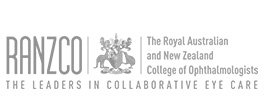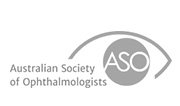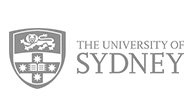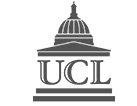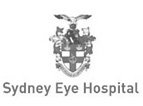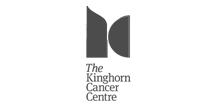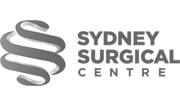Cataract Surgery
What is the surgical procedures?
The modern-day procedure to perform cataract surgery utilised by Dr Chiu is microincisional, key-hole surgery. A small incision of 1.8-2.4mm is made in the periphery of the clear window of the eye, the cornea. An opening is made in the capsule surrounding your lens, much like a grapeskin. The remainder of the capsule is deliberately left behind to support and hold the new artificial lens in place. An ultrasound probe is used to break up your cloudy lens, which is then removed by being vacuumed or aspirated out through the key-hole incision. This is called Phacoemulsification. A new intraocular lens (IOL) is inserted into the eye, which unfolds inside the eye, so it can fit through the small key-hole incision. The incision heals on its own and does not require any stitches. However it is important not to rub your eye and to wear a protective shield at night over your eye for a week after surgery. Some patients may also have a sensation that the eye feels a little scratchy for a short period after surgery.
Technological advances in cataract surgery have evolved whereby a laser can perform some of the steps of the cataract operation, called Femtosecond-assisted laser cataract surgery. This surgery involves the same steps as standard Phacoemulsification surgery. A high-speed laser beam is accurately focused to make corneal incisions, form a circular symmetrical opening in the lens capsule and break the lens into fragments by softening it. Dr Chiu positions the laser and perform parts of the procedure manually as with the standard technique.
There are advantages and disadvantages of this laser technology which Dr Chiu can discuss further with you.
What are the types of lenses used during cataract surgery?
Various types of intra ocular lenses are used during cataract surgery. These include:
Monofocal lens: this type of lens does not provides correction for vision at only one distance, usually distance or near. As a result, the patient will require glasses after the surgery to focus the vision at other distances, giving the best possible vision.
Monovision/Blended Vision: This technique involves using Monofocal lenses in a configuration which reduces the need for reading glasses. The vision is corrected with a monofocal intraocular lens whereby one eye performs distance vision and the other eye performs near or intermediate vision. Additional testing is required, and not all pateints are suitable for this procedure. While there are advantages for patients that are well suited to this technique, there are also some limitations, which Dr Chiu will discuss. Where possible, Dr Chiu prefers to perform a trial of this vision result before proceeding with surgery, and she will undertake a comprehensive assessment to assess your suitability.
Multifocal lens: this type of lens provides correction for both distance vision and near vision and sometimes intermediate vision, simultaneously. The disadvantage is that these lenses cause comparatively more halo and glare than the monofocal lens. A complete eye examination and newer diagnostic techniques can help determine if you are suitable for this surgery. Dr Chiu will take time to discuss the pros and cons with you.
Toric lenses: these lenses can be used to correct astigmatism, in either Monofocal or Multifocal lenses. If you have astigmatism and a non-toric lens is used, you will need glasses for visual tasks at distance, intermediate and near.
Accommodative lens are designed to mimic the movements of the natural eye lens by changing its shape inside the eye. This allows the eye lens to easily accommodate the change in focus for close and distant objects. There are limitations to these lenses.
Other specialised lenses
Magnification lenses: These are designed for patients with low vision due to macular disease. Patients who have had or need cataract surgery are suitable, and additional test are performed to assess the likely success of surgery. More information can be found here
Piggyback lenses: If you have had cataract surgery in the past and have a suboptimal result or require a significant dependence on glasses for some or all distances of vision
Pinhole lenses: These are sometimes used in one eye to correct presbyopia, as well as other eye conditions.
What are the tips for post-operative care?
Following surgery, Dr Chiu will prescribe eye drops to prevent infection and inflammation. Follow up visits are scheduled to monitor healing and to check for any complications from surgery. For standard procedures, once complete healing occurs glasses are ordered for optimal vision, if required. The need for glasses will depend on the type of intraocular lens inserted in the eye by Dr Chiu, and the discussions preoperatively about your desired outcome . Sometimes laser surgery is required for enhancement of the result, especially with Multifocal IOLs.
Cataract surgery is one of the safest surgeries to undergo. Complications are rare but can occur and need to be addressed as soon as possible to prevent any vision loss. You are asked to contact the surgery as soon as possible during the recovery phase if you experience any concerns or difficulties, so Dr Chiu and her staff can assist you.
Complications can include persistent inflammation, infection, increase in intraocular pressure, or peeling of the retina at the back of the eye. In rare cases, the cataract seems to reappear after a few months or years following surgery with a cloudy appearance in the field of vision. This occurs due to cloudiness of the capsule and not the implanted artificial lens. It is called posterior capsular opacification (PCO), sometimes referred to as “secondary cataract” and can be treated by a simple laser procedure to polish the lens capsule where the cloudiness is visible.
Cataracts are inevitable if you live old enough!. The start of the development of cataract may be slowed by maintaining a healthy life style.
Fruits and vegetables are a good natural source of vitamins and antioxidants important in the normal growth, functioning and prevention of age related damage to the eye lens. A diet rich in fruits and vegetables can help slow the progression of cataracts.
Not smoking or quitting if you do smoke lowers your risk of developing cataracts.
Regular exercise and maintaining a healthy body weight also helps to prevent cataracts.
Increased triglycerides are a risk factor for cataract. Keeping blood levels of triglycerides under control through diet restrictions helps in preventing cataract development.
Diabetes greatly increases the risk of developing premature cataract. Diabetics should check and control blood sugar levels regularly.
Wearing sunglasses with UV- protection when outside protects the eyes from damage by the sun’s harmful UV rays.
Cataracts are a slow developing disease which normally does not get detected early, unless you are under regular review for other eye conditions. Regular eye exams by an eye specialist can help in early detection of the disease.



